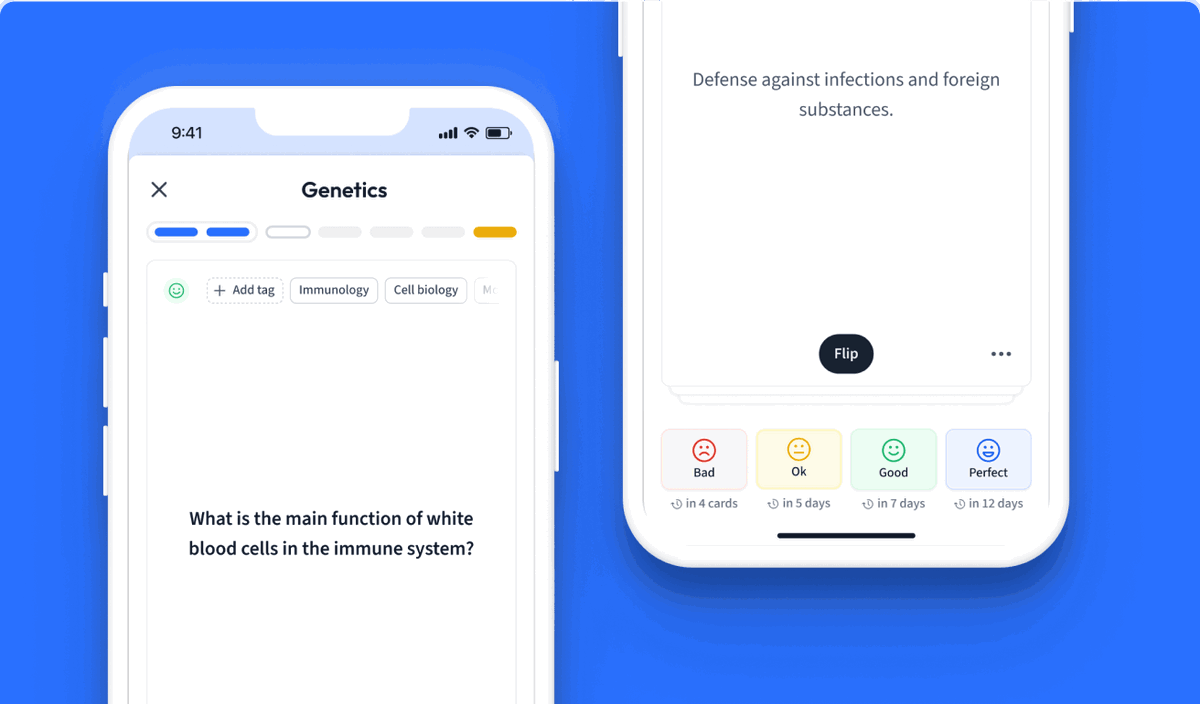Jump to a key chapter
Understanding Conjugated Lipids
Conjugated lipids form an integral part of the lipid family. Despite their prevalence in our diet and our bodies, these complex structures are often misunderstood. But what exactly are they? Let's dive in and explore the world of conjugated lipids.
Unearthing the Conjugated Lipids Definition
Conjugated lipids are lipid molecules that contain other functional groups, which are covalently bonded. These functional groups help in diversifying their functions in the biological system. Examples of conjugated lipids include lipoproteins, glycolipids, and phospholipids.
Building Blocks: The Molecules in Conjugated Lipids
The molecules that make up conjugated lipids are as varied as the lipids themselves. However, these building blocks can be broadly divided into lipid molecules and other functional groups.
- Lipids: These are the primary constituents of conjugated lipids. They are characterized by their hydrophobic properties, making them insoluble in water but soluble in organic solvents.
- Functional Groups: These are distinct groups of atoms within molecules that are responsible for the characteristic chemical reactions of those molecules. Different functional groups yield different types of conjugated lipids.
Breaking Down Conjugated Lipid Reactions
Conjugated lipids, due to their unique molecular make-up, undergo reactions which take advantage of both lipid and functional group properties.
For instance, lipoprotein, a type of conjugated lipid, undergoes reactions in the body to transport lipids through the water-based bloodstream easily.
In biochemistry and nutrition, studying these reactions can provide insights into numerous processes such as energy storage, cell signaling, and much more. For example, the reaction where lipoproteins help transport cholesterol and triglycerides through the bloodstream is fundamental to the regulation of these vital molecules in the body.
Different Types of Conjugated Lipids
Conjugated lipids are remarkably diverse, encompassing an array of types each with their structural variations and distinct biochemical roles. These chemically rich compounds, tied together by the presence of attached functional groups to their lipid segments, bear an integral part in our body functions. Let's examine these varied types more meticulously.
Broad Classification of Conjugated Lipids
Conjugated lipids, owing to their extensive variety, have been broadly categorised into three main types based on the nature of the active groups bonded to the lipid molecule. These types are phospholipids, glycolipids, and lipoproteins.
| Lipid Type | Additional Functional Group |
| Phospholipids | Phosphate Group |
| Glycolipids | Carbohydrate |
| Lipoproteins | Protein |
Intriguing Examples of Conjugated Lipids
Let's elucidate some of the specific examples of these conjugated lipids.
- Phospholipids: A staple of cell membranes, phospholipids, such as lecithin, consist of a glycerol molecule, two fatty acids, and a phosphate group. As an integral part of the cell membrane, they perform pivotal functions in maintaining cell structure and facilitating transport across the membrane.
- Glycolipids: Composed of a lipid coupled with a carbohydrate chain, glycolipids, like cerebrosides present in the nervous tissue, are crucial for cell recognition and immune response.
- Lipoproteins: As the name implies, lipoproteins are complexes of lipids and proteins. They facilitate the transport of hydrophobic lipid molecules in the bloodstream. Low-density lipoprotein (LDL) and high-density lipoprotein (HDL) are two well-known examples.
Distinguishing Features of Various Types of Conjugated Lipids
Now that we've deciphered some examples of these fascinating conjugated lipids, let's dive deeper to recognise what makes each type unique.
Phospholipids are amphipathic molecules, i.e., they have both hydrophilic (water-loving) and hydrophobic (water-hating) sections. This allows them to form lipid bilayers, the foundation of cell membranes.
Glycolipids apart from assisting in the formation of cell membrane, they are paramount in defining the organism's blood group alongside interacting with extracellular materials and organisms. For example, your blood group (A, B, AB, or O) is determined by the type of sugars present in the glycolipids on your red blood cells.
Finally, lipoproteins, characterised by their density and component ratio, are the lipid transportation system of the body. Low-density lipoproteins carry cholesterol from the liver to cells, while high-density lipoproteins return cholesterol from the cells to the liver for excretion or recycling. Consequently, these lipoproteins determine the level of 'bad' or 'good' cholesterol in your body.
Imagine lipoproteins as boats sailing in the bloodstream. LDL is like a delivery boat dropping off cholesterol packages to cells with no limit, which can lead to cholesterol build-up (plaque) in your arteries (atherosclerosis). HDL acts like a garbage collection boat, picking up excess cholesterol packages from cells and the bloodstream, to be broken down in the liver, reducing the risk of atherosclerosis.
Characteristics of Conjugated Lipids
Conjugated lipids are bio-organic molecules primarily made up of lipids with covalently bonded functional groups. These unique combinations give rise to an array of characteristics that closely define, shape and categorise these conjugated lipids.
Unique Chemical Properties of Conjugated Lipids
While conjugated lipids encompass an extensive variety, they share a common set of fundamental chemical properties. Let's explore some of these notable characteristics:
- Amphipathic Nature: Conjugated lipids such as phospholipids have both hydrophilic (water-attracting) and hydrophobic (water-repelling) segments due to the presence of polar functional groups and lipid segments. This allows them to be soluble in both water and oil-based mediums, contributing significantly towards cell membrane structure and function.
- Diverse chemical reactions: The functional groups in conjugated lipids are involved in various biochemical reactions. For example, the phosphate group in phospholipids can partake in acid-base reactions due to the presence of acidic hydrogen.
- Complex Structural Formations: Depending on the type, conjugated lipids can form micelles, bilayers, and liposomes spontaneously in aqueous environments because of their amphipathic nature.
- High Energy Content: Lipids are known for their high energy content, and conjugated lipids are no exception. Lipoproteins, for instance, are major contributors to energy storage and transportation in the body.
Biological Functions: Conjugated Lipids in Action
Conjugated lipids are involved in numerous biological functions thanks to their versatile chemical properties. Here are some key examples:
- Cell Membrane Formation: The amphipathic character of conjugated lipids, like phospholipids and glycolipids, helps maintain the integrity and functionality of cell membranes. They form the lipid bilayer, which provides a defined boundary for cells and aids in selective permeability.
- Transport of Lipids: Lipoproteins play a crucial role in the transport of lipids (like cholesterol and triglycerides) in the blood, a medium that's predominantly water and hence, naturally repels hydrophobic lipids.
- Cell signalling: Some conjugated lipids, like the glycolipids, are instrumental in cell recognition and immune response. They also play a role in cell signalling, modulating the communication between cells to coordinate biological processes.
- Energy Storage: Lipoproteins serve as a secure and efficient energy storage system due to their high-energy content. They are a critical energy repository in animals, including humans.
Correlation between Structure and Function in Conjugated Lipids
There's an intrinsic relationship between the structure and function of conjugated lipid molecules - a central concept in biochemistry. Understanding the structure allows us to predict the role each lipid plays in our bodies. For instance:
- Phospholipids: The phosphate group gives these molecules their amphipathic character - forming part of the lipid bilayer that constitutes cell membranes.
- Glycolipids: The attached carbohydrate chain enables glycolipids to play an essential role in cell recognition, modulation of immune responses, and cell signalling.
- Lipoproteins: The structural configuration of protein and lipid makes lipoproteins suitable for lipid transport in the bloodstream. The lipid part stores and carries lipids, whereas the protein part makes it soluble in blood.
Regardless of their differences, the underlying principle remains the same: the structure of conjugated lipids plays an imperative role in determining their function. This principle lays the foundation for understanding the myriad essential roles they play in our bodies and the larger biological system.
Real-world Applications and Importance of Conjugated Lipids
Conjugated lipids, with their unique structure and properties, perform numerous functions in living organisms. Their importance is widely recognised in biology as well as human wellness and nutrition. They assist in cell membrane formation, facilitate lipid transport in the bloodstream, and serve as energy repositories. Their roles extend even further; let's dive into the specifics.
The Crucial Role of Conjugated Lipids in Biology
Conjugated lipids play a central role in the structure and function of biological systems due to their unique chemical properties. These properties arise from the combination of lipid molecules with other functional groups, leading to a diverse range of functions in the body. The following points highlight the essential roles played:
- Cell Membrane Formation: Due to the amphipathic nature of certain conjugated lipids like phospholipids, they significantly contribute to cell membrane formation. The resultant lipid bilayer provides a stable boundary for cells and facilitates selective permeability for substances, ensuring a controlled internal environment within the cell.
- Signalling Molecules: Some conjugated lipids act as signalling molecules. They contribute to the communication between cells, thereby modulating several biological processes. For instance, certain glycolipids play a vital role in the signalling pathways associated with the immune response of the body.
- Energy Storage: With high energy content, conjugated lipids like lipoproteins serve as excellent energy storage systems. They act as an energy reservoir that can be accessed and utilised by the body as and when required.
- Lipid Transport: The specialised structure of lipoproteins serves a crucial purpose of lipid transport in the body. They effectively carry lipids, such as cholesterol and triglycerides, in the blood - a medium that inherently repels hydrophobic lipids. Low-density lipoproteins transport lipids to various parts of the body, while high-density lipoproteins aid in removing excess cholesterol from the body.
Conjugated Lipids: Impact on Human Wellness and Nutrition
Not only at a cellular level, but these important molecules also have a profound impact on human wellness and nutrition, as elaborated below:
- Cholesterol Management: As mentioned earlier, lipoproteins help manage cholesterol levels in the body. High levels of low-density lipoproteins can lead to an accumulation of cholesterol in the arteries, increasing the risk of heart disease. In contrast, high-density lipoproteins remove cholesterol from the bloodstream, bringing it back to the liver for degradation, thereby reducing the risk of cardiovascular ailments.
- Diet and Nutrition: Conjugated lipids are an essential dietary component. For instance, omega-3 and omega-6 fatty acids, which are forms of polyunsaturated fatty acids, need to be included in the diet as the body cannot produce them. They are crucial for brain function and the normal growth and development of the body.
- Phospholipids' Role in Digestion: In the digestive system, phospholipids like lecithin are vital for fat digestion. They emulsify dietary fats, i.e., break them down into tiny droplets, which increases their surface area, making it easier for enzymes to digest these fats.
- Glycolipids and Immunosignalling: As part of immune system regulation, glycolipids on the surface of red blood cells define a person's blood group, a factor of utmost importance during blood transfusion. Any transfusion incompatibility can potentially lead to life-threatening reactions. Thus, understanding glycolipids' roles directly impacts health and medicine.
Decoding the structure and function correlation in conjugated lipids paves the way for grasping their monumental importance in nature, health applications, and potential roles in future therapeutic formulations. These lipids indeed command a concrete affirmation of their pivotal roles across multifarious functional domains of human wellness, nutrition and biology.
Diving Deeper into Conjugated Lipids
Having understood the basics of conjugated lipids and their importance, it's time to move beyond the realm of the commonplace and delve into the finer and advanced intricacies of these fascinating molecules.
Advanced Concepts in Conjugated Lipids
A more convoluted understanding of conjugated lipids requires an appreciation for their nuanced molecular structures, as well as the often subtle, yet integral, ways these structures define their overarching functions. Understanding these complex scenarios is beyond the purview of basic biochemistry, and is the space where advanced biochemistry and molecular biology thrive.
- Double Bond Conjugation: Many conjugated lipids involve conjugation of double bonds. This refers to alternating single and double bonds throughout the molecular structure, resulting in overlapping of p-orbitals and delocalisation of electrons. The result is a system that’s less reactive and more stable. This double bond conjugation is often seen in fatty acids, a type of lipid, impacting their overall stability and reactivity.
- Lipid Rafts: These are subdomains of the plasma membrane that contain high concentrations of cholesterol and glycosphingolipids. Lipid rafts provide a more ordered and structurally rigid environment within the fluid mosaic structure of the membrane. They play crucial roles in cellular processes, including signal transduction, protein sorting, and membrane trafficking.
- Structural Diversity and Synthesis: Conjugated lipids exhibit an immense range of structural diversity due to the unique combination of lipids and functional groups. Their synthesis, involving enzyme-catalysed reactions, further adds to this diversity. For instance, the synthesis of glycolipids involves the enzymatic addition of a carbohydrate group to a lipid molecule.
- Metabolic Pathways involving Conjugated Lipids: Conjugated lipids are also involved in complicated biological metabolic pathways - a series of interconnected biochemical reactions that occur within a cell. These include lipid metabolism, where break down and formation of lipids occur, and the citric acid cycle, an essential metabolic pathway in aerobic organisms.
Exploring Latest Research in Conjugated Lipids
As research into conjugated lipids continues to evolve, several captivating insights into these molecules have been presented. These research findings span across various biological domains, from cell biology to virology and therapeutics, presenting a broad spectrum of potential applications and possible future domains to explore.
- Conjugated Lipids and Cancer: Emerging research has shown that certain glycosphingolipids, a type of conjugated lipid, can play a pivotal role in cancer biology. They influence a variety of cancer-associated processes, including cell proliferation, migration, and angiogenesis. Thus, understanding the detailed mechanisms of these lipids could provide a new perspective for cancer therapy.
- Role in Viral Pathogenesis: Certain viruses exploit the lipid composition of host cell membranes to gain entry into the cells. These processes typically involve various specific conjugated lipid molecules, uncovering potential pathways for therapeutic targeting in viral diseases.
- Neurological Disorders: Dysregulated lipid metabolism, faulty lipid signalling, or altered membrane composition can have devastating results, and has been linked to various neurological diseases, including Alzheimer's disease and Parkinson's disease. This presents enormous potential in studying how manipulating conjugated lipids may influence these disorders.
- Drug Delivery Systems: Conjugated lipids have gathered immense attention as potential drug delivery vehicles, especially in cancer therapeutics. Lipid-based nanocarriers, such as liposomes, have proven quite successful in housing anti-tumour drugs and delivering them to the issue site.
Interesting Questions in the Study of Conjugated Lipids
As you delve deeper into the understanding of conjugated lipids, several intriguing questions might arise. Here are a couple of thought-provoking questions that researchers in this field frequently grapple with:
- Disease Mechanisms: How exactly do altered conjugated lipid profiles contribute to disease progression, such as in cancer and neurodegenerative disorders? How can this knowledge be utilised to develop advanced therapeutic approaches?
- Evolution of Lipid Composition: How has the lipid composition in organism membranes evolved over time? What selective pressures might have shaped these dynamic changes?
- Impact of Diet on Lipid Metabolism: How does diet and nutrition influence the metabolism of conjugated lipids? How can knowledge about this impact be used to formulate dietary guidelines for disease prevention and management?
- Drug Development: How can an elaborate understanding of conjugated lipids guide the development of new drugs, particularly in the realm of targeted drug delivery systems?
Intricate aspects like these bring forth the dynamic and captivating nature of studying conjugated lipids. It is an evolving field, steadily expanding horizons with a robust corpus of ongoing research.
Conjugated Lipids - Key takeaways
- Conjugated lipids are broadly categorised into three main types based on the active groups bonded to the lipid molecule: phospholipids, glycolipids, and lipoproteins.
- Examples of conjugated lipids include lecithin (a phospholipid), cerebrosides (a glycolipid), and low-density lipoprotein and high-density lipoprotein (lipoproteins).
- Unique characteristics of conjugated lipids include amphipathic nature, diverse chemical reactions, complex structural formations, and high energy content.
- Conjugated lipids, due to their versatile chemical properties, are involved in several biological functions such as cell membrane formation, lipid transport, cell signalling, and energy storage.
- The structure of conjugated lipids plays a significant role in determining their function, thus contributing to their biological roles and applications in areas such as cell membrane formation, signalling molecules, energy storage and lipid transport.


Learn with 15 Conjugated Lipids flashcards in the free StudySmarter app
We have 14,000 flashcards about Dynamic Landscapes.
Already have an account? Log in
Frequently Asked Questions about Conjugated Lipids


About StudySmarter
StudySmarter is a globally recognized educational technology company, offering a holistic learning platform designed for students of all ages and educational levels. Our platform provides learning support for a wide range of subjects, including STEM, Social Sciences, and Languages and also helps students to successfully master various tests and exams worldwide, such as GCSE, A Level, SAT, ACT, Abitur, and more. We offer an extensive library of learning materials, including interactive flashcards, comprehensive textbook solutions, and detailed explanations. The cutting-edge technology and tools we provide help students create their own learning materials. StudySmarter’s content is not only expert-verified but also regularly updated to ensure accuracy and relevance.
Learn more

